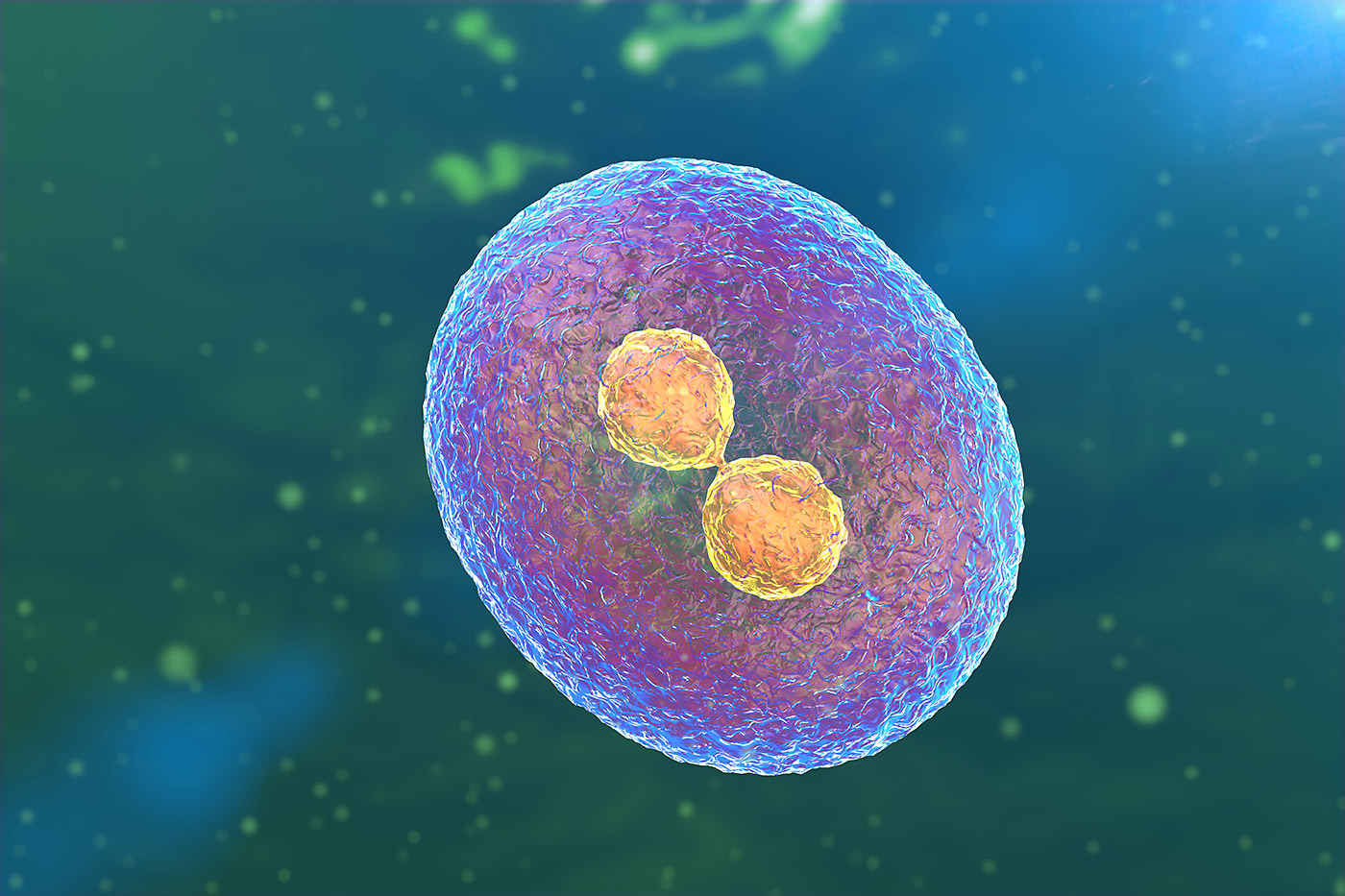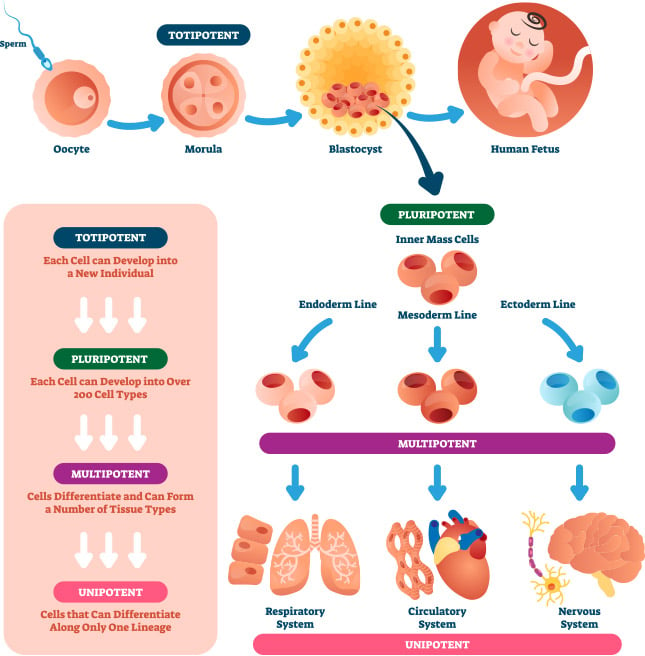About
What are Stem Cells?

Embryonic, Mesenchymal and Hematopoietic stem cells
There are three types of stem cells: embryonic, adult, and hematopoietic. Embryonic stem cells are the most basic cells and highly undifferentiated. As they mature, they can become any cell in the body. Embryonic stem cells gets its name because they are derived from fetal tissues. Since they are harvested from fetuses, using embryonic stem cells in research and medicine is very controversial. There are also risks of infection when using embryonic stem cells because they are not derived from the patient’s own tissue. The second type is the adult stem cell lines which are typically derived subcutaneous tissue (where the fat cells live). Adult stem cells are multipotent and have limited renewal abilities. Since they are derived from the germ layers during early development and remain until adulthood, this may contribute to aging. These cells are also known as adipose-derived stem cells (ASCs) are harvested from adults from the subcutaneous tissue using a small liposuction type procedure. The third type are the hematopoietic stem sells(HSCs) these are derived from the blood.
Stem cells are regenerative cells
The tissues in the body are made up of cells, and every different type of tissue contains cells with a different function. For example, muscle contains muscle cells whose function is to contract and relax for movement, store nutrients, and maintain body temperature. Development of every tissue starts with stem cells that will further divide and develop more specific functions. Stem cells have the power to differentiate into many types of different cells, which makes them very potent. Infants and children have stem cells with high potency, meaning they have the power to differentiate into cells that comprise the different tissues of the body. As you age, stem cells become less potent and less in number.
Stem cells are regenerative cells and have the potential to proliferate and become any cell in the body. When dividing stem cells make a replica of themselves in a process of self-renewal and a daughter cell that can further develop to have more specific functions. This daughter cell becomes developmentally committed to become a cell with the same functions of the surrounding tissues. There are many possible outcomes for a dividing stem cell. Two self-renewing stem cells, two daughter cells, or one self-renewing stem cell and one daughter cell can be produced depending on the requirements of the surrounding tissues.

Different levels of stem cell potency
Stem cells from different parts of the body exhibit different levels of potency, or abilities to divide and produce different types of cells within an organism. Some cells are able to transform into any of the 220 cellt types found in the embryo, while others have a limited number of cell types they can transform into.
Totipotent stem cells
The highest potency of a stem cell is totipotent and can only be found in the first four to eight cells of a developing fetus.
Pluripotent stem cells
The next level of potency is pluripotent and found in embryonic stem cells. Embryonic stem cells come from the inner cell mass, the portion of the mammalian embryo that will develop into the fetus to form the body and germ cells for reproduction. Only at this stage of early development can embryonic stem cells be harvested and cultured in vitro.
Multipotent stem cells
During early development the inner cell mass forms three germ layers and the cells reach the next level of potency, multipotent. Multipotent stem cells have more restricted function based on the tissue they are to form and play an important role in driving organogenesis (formation of organs) to make adult tissue.